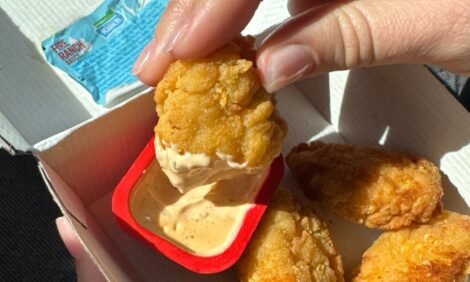



Biologists Warn of Dangers of Live Newcastle Vaccines
US - Attenuated live vaccines that protect poultry against Newcastle Disease may be altering the genetic makeup of the wild virus strains, which could make future outbreaks unpredictable and difficult to tackle.Newcastle Disease is an economically devastating poultry disease that costs the industry millions of dollars.
"Many vaccines in the animal industry are developed by modifying a virulent live virus," said Mary Poss, professor of biology and veterinary and biomedical sciences at Pennsylvania State University. "These vaccines elicit a strong protection against disease."
However, vaccinated birds can shed the vaccine virus to infect other birds, and live virus vaccines do not always protect birds from infection from other viral strains of Newcastle disease.
Professor Poss and her Penn State colleagues Yee Ling Chong, graduate student in biology; Abinash Padhi, post-doctoral fellow and Peter J. Hudson, Willaman professor of biology, found that one vaccine strain recombined – exchanged genetic material – with at least three wild strains, creating new viruses. These viruses are found in both domestic and wild birds. The team's findings appeared yesterday (22 April) in PLoS Pathogens.
"Our findings indicate that birds can be simultaneously infected with the live virus vaccine and several other strains of this avian virus," said Professor Poss. "This raises concerns that modified live virus vaccines, though effective, may combine with circulating viruses to create unpredictable new strains."
A modified live virus vaccine is essentially a weakened virus that does not cause disease but mimics a natural infection that in turn evokes a strong immune response from the infected host. But Professor Poss argues that vaccination may be unwittingly increasing the diversity of Newcastle Disease viruses that are circulating in wild birds.
For instance, many poultry farmers typically vaccinate the flock by mixing the vaccine in the birds' drinking water or by aerosol, which means wild birds and pigeons can also become infected with the vaccine virus.
This sets up the opportunity for viral recombination. A bird is infected with two different viruses at the same time, one from the weakened vaccine and one naturally, and both viruses then infect the same cell.
In addition to the possibility of creating new viruses, different strains of the virus that causes Newcastle disease may be evolving in different environments. Recombination among these strains could bring together genes that have multiple means to evade immunity in a host.
Professor Poss added that vaccine developers need to be aware of the potential for driving virus evolution using modified live viruses and should instead consider using killed or inactivated viruses. Scientists are already using that approach against Newcastle Disease in some areas but not globally.
"We need to step up the surveillance and monitoring of viral diseases in poultry and wild birds," said Professor Poss. "We need to be aware that management practices including the use of live virus vaccines can change viral diversity and the consequences of such changes will not be evident for several generations."
While many virus strains undergo a boom and bust cycle – they are present for a period of time and then die out – Professor Poss notes that the use of live virus vaccines creates a persistent level of the vaccine strains in the global bird population.
Poultry farmers around the world vaccinate birds with vaccine made from one of two live strains of an avian virus that causes Newcastle Disease. While vaccines from the first strain are used mainly in Asia, the second strain is used in vaccines worldwide. Since the 1950s, vaccines derived from the two strains have helped poultry farmers avoid devastating economic losses.
To determine the impact of vaccination on the evolution of wild viruses, researchers analysed the evolutionary history of 54 samples of full-length genome sequences of the avian paramyxovirus – the virus that causes Newcastle Disease – isolated from infected birds.
If all six genes that make up the paramyxovirus shared the same ancestor, Professor Poss reasoned, the family trees of each gene would look the same. However, genes that are derived from a different strain would have family trees distinct from the other genes of that virus, a strong signature of recombination.
Statistical analysis of the gene sequences indicates that recombination occurred in at least five of the sampled genomes. Four of these five genomes contained gene sequences from one of the two vaccine strains.
Researchers next reconstructed the population history of the different viral strains. The strain from which the vaccine was derived showed a higher and more constant population size than other circulating strains.
"When viruses don't change, it is typically a good thing," Professor Poss explained. "But as soon as they start to change, like the flu, we don't know what the transmission and disease potential are going to be like from one year to another. So driving up viral diversity is not a good thing."
Reference
Chong Y.L., Padhi A., Hudson P.J. and Poss M. 2010. The effect of vaccination on the evolution and population dynamics of avian paramyxovirus-1. PLoS Pathog 6(4): e1000872. doi:10.1371/journal.ppat.1000872
Further Reading
| - | You can view the full report by clicking here. |
Further Reading
| - | Find out more information on Newcastle disease by clicking here. |








